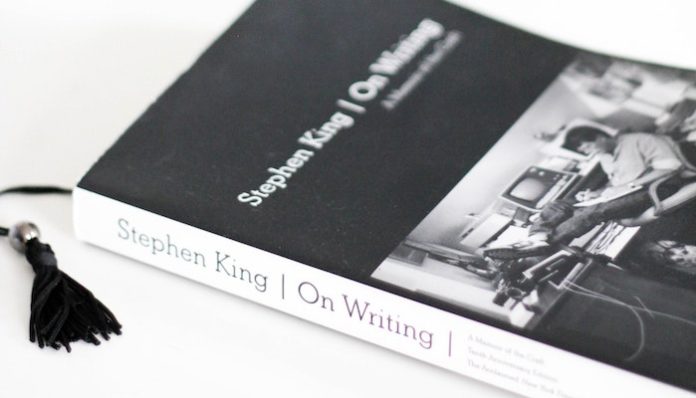
I am terrified of Stephen King. Not for the reasons that you might expect. Sure, I spent some of my early teenage summer nights huddled under a blanket with a brick of a Stephen King novel and flashlight in hand. I may have lost some sleep to Pennywise the Clown, but IT didn’t scare me any more than when I see workers not cleaning up under the EMPLOYEES MUST WASH HANDS BEFORE RETURNING TO WORK sign.
I began to sincerely fear Stephen King when I became a writer. I do not fear the self-proclaimed “King” of Horror for his vampire-ridden dark antebellum alleyways or rabid man-eating dogs. I fear him for his productivity.
When I read his only masterpiece, “On Writing: A Memoir of the Craft,” I was in awe of just how prolific this man can be. As I write this essay, Stephen King has written 85 books. According to Wikipedia, King has penned 59 novels, 10 story collections, 5 non-fiction, and 11 in the category “other,” (in which he has written graphic novels, screenplays, and essays.) King is not willing to fall into retirement at the age of 70, and not even being crushed by a van while taking a walk deterred his outpouring of words. Let’s face it, while mortals sleep, Stephen King writes.
“On Writing: A Memoir of the Craft” is brilliant in many ways, first it lets us see the king before he was the God of mass-market horror novels. We see him struggling to pay the bills as an English teacher in Hampden, Maine where his wife dug out an early draft of Carrie from their wastebasket because she saw the potential.
In his memoir, Stephen King lays out his routine: “I like to get ten pages a day, which amounts to 2,000 words. That’s 180,000 words over a three-month span, a goodish length for a book — something in which the reader can get happily lost if the tale is done well and stays fresh.”
I haven’t read all of King’s novels, but of the ones I’ve read several his early work stand out as favorites. Carrie was a short read by King’s standards but was full of terrifying characters. ‘Salem’s Lot painted a portrait of the darker side of small-town America, using the classic vampire lore mixed with modern US culture. Pet Sematary explores tragic family loss and Christine instills the image of teenage outcasts. Whatever Stephen King novel I read I stop and admire his art for storytelling.
The most amazing thing is that King has done this since the 1970s. He is a machine. I like to think of King as the Cal Ripken Jr. of modern writing. While Cal Ripken Jr. may not have been the most talented of his contemporaries, he played 2,131 consecutive MLB games. They both laced up their shoes one foot at a time and went to work, every day. Stephen King famously wrote through addiction and claimed in “On Writing” that he does not remember writing Cujo due to intoxication.
King teaches us many things in his must-read memoir for budding writers, and it is not that writing drunk is productive. It is that he used writing it as a tool to put his demons at bay. He got up every day and did his job, and it just so happens that his job is writing wildly entertaining novels.
Featured image via Unsplash


















